
13 Photography Gadgets We Didn’t Need
The world of photography is awash with gear and accessories for an eager public. But not every invention is worthy of merit as seen by this glorious collection of “WTF were they thinking?”.

The world of photography is awash with gear and accessories for an eager public. But not every invention is worthy of merit as seen by this glorious collection of “WTF were they thinking?”.

Swiss photographer Fabian Oefner recently gave this short 10-minute talk at TEDx Warwick …
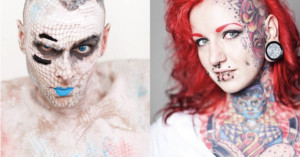
When the term model is thrown around, there's a fairly typical image that probably comes to mind for most people. In the male department, six-pack abs or a clean-cut look might fit the bill. And the female department more often than not involves the descriptors tall and slender.
Modeling agency We Are Unlike You isn't interested in any of that. Like the UGLY MODELS agency we shared with you a little over a year ago, they are more interested in representing unique "characters."
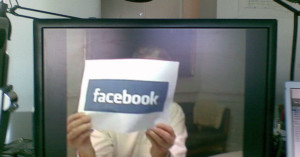
Those of you who have been waiting for a scientific reason to tell some of your friends to stop cluttering your Facebook News Feed with a new photo every 5 minutes need wait no more. A new study out of the UK examining the effects of sharing photos on social networks recently found that uploading too many photos (as well as the wrong type) can actually make people like you less.
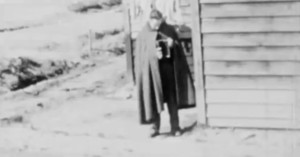
Ever since photography was invented in the 1800s, there have been people willing to risk life and limb to bring images to the public eye. Among the craziest examples are prisoners of war during World War II -- people who built makeshift cameras out of smuggled parts in order to capture what life was like inside their prison camps.
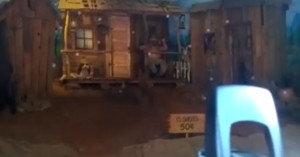
You know those shooting gallery games you find at carnivals? The kind in which you try to win prizes …
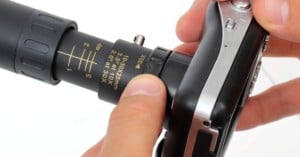
We've seen some interesting gimmicky cameras come out of Japan in the past -- from Japanese anime special editions to a donut camera -- but this latest one might come in handy a bit more often. Dubbed the APOLLO2 and created by the company Thanko, it's a compact camera strapped to a whopping 30x telephoto lens.
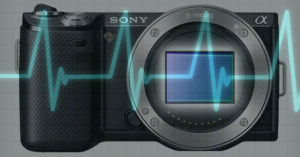
Have you ever looked back at a photo and wondered "what was my heart rate and blood pressure when I took this photo?" Yeah, neither have we. But on the off-chance that you have, a new Sony patent application might pique your interests.
The technology specified in the application intends to enable the company's cameras and mobile devices to tag your photos with vital sign information -- allowing you to not only ask those questions, but have them answered as well.
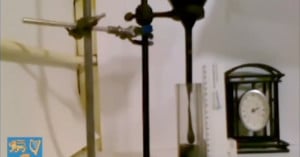
There doesn't seem to be any shortage of high-speed cameras out there, doing work to slow down footage of fast moving objects enough for us to study what's happening in that short, short time frame. But what about using a camera to capture what could potentially be the slowest moving substance of all time? Yep -- someone's doing it.

Attention photojournalists: As if times weren't tough enough already, a new startup wants to replace your work with Twitter-based crowdsourcing.
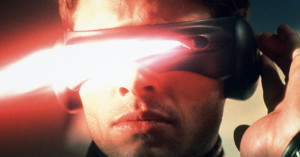
One of the neat features in Google's Glass wearable computer (and camera) is voice commands. Say "okay glass," and the device will start listening for an instruction from you. Here's an interesting (and humorous) piece of trivia: did you know that Google considered using "pew pew pew" as the activation phrase?
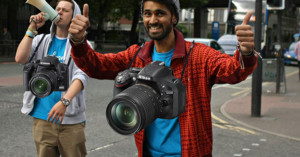
Can you trust camera reviews submitted by customers of online retailers? Not entirely, suggests a new academic study, and not for the reasons you might think.

If you live in New York City, one of these days you might just stumble upon a bottle of Aunt JeMichael instead of Aunt Jemima while shopping for syrup in the supermarket. No, it's not a strange off-brand that somehow got mixed in with the big-name stuff, it's part of advertising and fine art photographer Mike Mellia's Self-Absorbed series.

For his project titled Improbabilità ("improbability"), Italian photographer and photo manipulator Giuseppe Colarusso created a series of surreal photographs showing various household objects and scenes... with a twist.
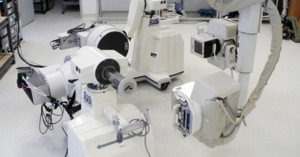
Wildlife researchers now have a much clearer idea of how bats fly, thanks to the wicked-looking X-Ray video above that shows the animal's skeleton at work.
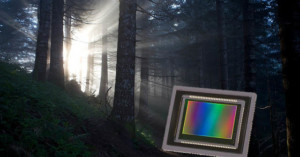
How long does it take for a photon from the Sun to reach your camera sensor (or film) and help form a photograph? If you answered "8 minutes," you'd be kind of right, and but also kind of wrong. An answer that's more correct is "at least tens of thousands of years."
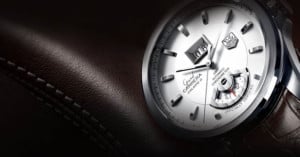
Have you ever noticed that the watches and clocks found in product photographs and advertisements usually show the time 10:10? If you haven't, pay attention the next time you're flipping through a publication and come across a watch ad---the rule is almost always true.
If you have noticed this, do you know why 10:10 is the default time for watch photographers?
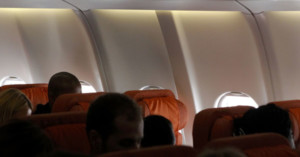
NSA whistleblower Edward Snowden has become a person of extreme interest in recent days, but thus far he's managed to avoid photojournalists' cameras fairly well. The same cannot be said of the empty airplane seat which was supposedly going to take him from Russia to Cuba this past weekend.
In an airplane full of disappointed photojournalists, the conspicuously vacant Seat 17A became in short order the most photographed empty airplane seat in the world.
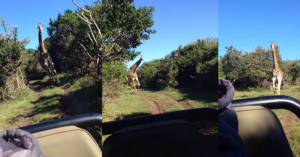
If you ever take your camera on a safari to photograph animals in the wild, here's one animal you should be careful around: the giraffe.
Sure, it doesn't have a dangerous reputation like lions or other fierce animals at the top of the food chain, but if you're not careful around the world's tallest terrestrial animal---especially the hormonal ones---you may quickly find yourself in a situation that's strangely similar to a famous scene in the movie Jurassic Park.
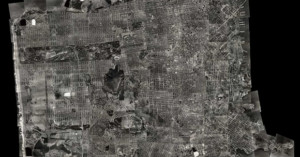
What you see above is an ultra-high resolution aerial photograph of San Francisco as it looked in 1938. The David Rumsey Historical Map Collection put the image together using 164 large format black-and-white photos of SF that were shot in 1938. When viewed through a zoomable image viewer, the composite photo is pretty much a 1938 version of Google Earth's satellite view.
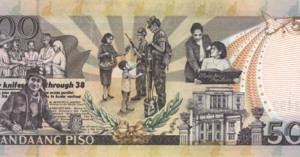
Here's an interesting photo trivia question: can you name any major world currencies that feature an image of a camera?
Answer: the old five hundred peso bill over in the Philippines. On the back of the original series is an image of a Rolleiflex twin-lens reflex camera!

Last month we shared some photo illustrations by science artist Ron Miller that showed what the night sky would look like if other planets in our solar system replaced the moon. Now Miller is back again with an equally interesting concept: what would landscape photos look like if Earth had a ring like Saturn's?

Canon's DSLRs come with a variety of continuous shooting speeds, ranging from 2.5 frames per second on the 300D (AKA Digital Rebel/Kiss Digital) to a whopping 14 frames per second on the high-end 1D-X. If you want to get a taste of what these shutter speeds sound like on the actual cameras, check out the comparison video above by YouTube user dochero2005.
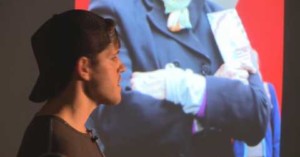
Here's a TEDx talk photographer Brandon Stanton gave at Columbia University last October about "how our worldview is negatively affected by good stories." Stanton is the photographer behind the website Humans of New York.
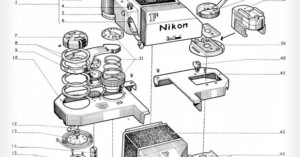
Want to see how old film single-lens reflex cameras were put together? Clare (Wyoh on Tumblr) recently found a number of camera schematics inside an old French magazine from decades ago. The schematics show exploded views of the Nikon F, Nikon F2, Nikon FM, and Nikon FA SLRs. Each camera is shown in its most basic parts, which are numbered and labeled (in French).
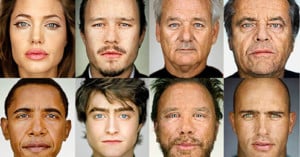
Yesterday, PetaPixel shared photographer Richard Prince's composite portrat created by blending together 57 faces of girlfriends seen on Seinfeld. I also enjoy playing with the idea of image averaging, and can't get enough of it. Late last year, I started experimenting with the idea of averaging faces by blending portraits.
I needed a set of faces that were all semi-similar enough to create good averages with. Well, if you haven't seen the work of photographer Martin Schoeller, you are missing out! He has a series of close-ups that are shot with very similar lighting styles and compositions of famous (and not-so-famous) people. It's simply mesmerizing to see. I grabbed the shots above to try face averaging out with.
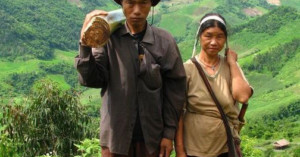
If you had to select one photograph to best represent the entire human race, which photograph would you choose? That's a question encyclopedia editors must answer, and one that the Wikipedia community had to as well. The photograph above is what they have settled on (as of May 2013) for their article on "Human".
It's a portrait of a couple from northern Thailand's Akha people group, indigenous hill tribe. The husband is carrying the stem of a banana-plant that will be fed to their family's pigs.
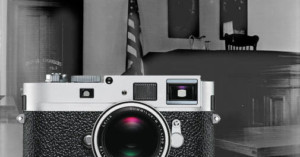
If you've ever shot with a Leica M rangefinder camera, you probably know how effective the camera can be for stealthy shooting. After all, there's no mirror that needs to swing out of the way like there is in a DSLR, so the main sound you'll hear is the soft click of the shutter curtain flapping open to expose the film or sensor.
It's not just Leica aficionados that appreciate the silent shutter: did you know that the Leica M is held as the standard for silent photography in courtrooms across the United States?
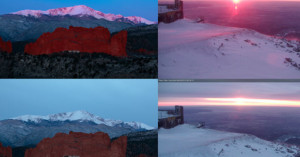
There is no shortage of landscape photographs of mountains at sunrise on the Internet, but how often do you get to see photographs captured at the same time from the mountain's perspective? Photographer Todd Caudle ('Cloudman' on 500px) was able to capture these two viewpoints simultaneously yesterday morning by shooting with both his personal camera and a live webcam located at the mountain's summit.

PechaKucha is a presentation style that gives presenters exactly 20 slides and 20 seconds per slide to get their point across. Designed by architects Astrid Klein and Mark Dytham in Tokyo in 2003, what started as a weekly show-and-tell format at their firm has become a world-wide presentation phenomenon that recently broke into the world of photography.
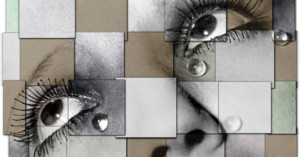
Fernanda Viégas and Martin Wattenberg are scientists by trade and artists at heart. They work as the leads of a Google research group in Cambridge, Massachusetts, and are constantly on the lookout for interesting (and artistic) ways to visualize data.
Back in 2011, they came up with an interesting project titled "The Art Of Reproduction," which shows how digital reproductions of photographs (and paintings) found on the Internet are far from "truthful."
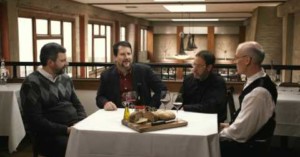
Back in 2010, Adobe put out a short documentary called "Startup Memories -- The Beginning of Photoshop" to celebrate the program's 20-year anniversary by recalling its past. Somehow, that documentary slipped through our fingers at the time, but seeing as we've already started a conversation on how Photoshop is "remixing the world," we thought it was an opportune time to share this blast from the past.
In the video, the founders of Photoshop -- John Knoll, Thomas Knoll, Russell Brown, and Steve Guttman -- sit down around a table and talk about the series of coincidences and circumstances that led to the creation of the tool that has visually redefined our times.
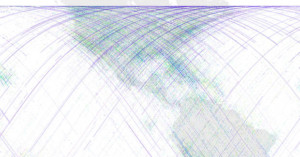
Since NASA's first mission to the International Space Station back in 2000, astronauts on board the artificial satellite have snapped over 1.1 million photographs. What's neat is that every one of those photographs is available to the general public through a giant online database.
Open source rocket scientist Nathan Bergey decided to use his coding skills to do a little digging through the image archive, and ended up creating some beautiful visualizations showing where the images were shot in relation to our planet.

As a followup to our post earlier today about former White House photographer Eric Draper's work, here's an interesting and relevant 17-minute-long story that aired on NPR in January of this year. It's an interview with former presidential photographers Eric Draper and Robert McNeely, who photographed the presidencies of George W. Bush and Bill Clinton (respectively).
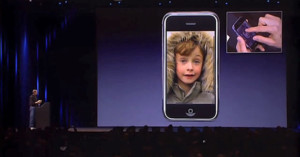
If you want a taste of how fast technology progresses in the world of digital photography, just look at the consumer camera industry through the lens of a company that continues to make a big splash: Apple.
When Steve Jobs unveiled the original iPhone on January 9, 2007 at the Moscone Center in San Francisco, cameras on phones were horrible and viewing those shoddy pictures was a pain. Then, almost overnight, the smartphone photography revolution -- and the slow demise of the compact camera -- began.
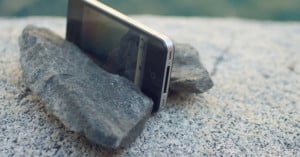
"How's the image quality on the TriPod 5?" That's a question you would perhaps be hearing these days if certain decisions had been made differently years ago over in Apple HQ. When the Cupertino-based company was brainstorming names for the smartphone that would eventually be called the "iPhone," one of the names that was being considered was "TriPod."

It's not uncommon for digital cameras to have burst modes as fast as 10 frames per second these days -- especially in mirrorless and pellicle mirror cameras -- but do you think you have a good understanding of just how fast 10FPS is? If not, check out this video by YouTube user krnabrnydziobak, who pointed a Phantom Miro eX2 at a Nikon D4 to see what 10FPS looks like when captured at a staggering 1920FPS.
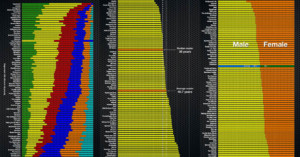
We now take a break from our regularly scheduled programming to direct your attention to an interesting study that was published yesterday by Pingdom. The website tracking company decided to analyze the demographics of the world's top 100 blogs (according to Technorati), sorting them by reader age and gender. It's findings regarding PetaPixel caught our eye.

Did you know that the White House was completely gutted and rebuilt on the inside between 1949 and 1952? After decades of poor maintenance, the building was in danger of collapsing in 1948, which forced President Harry Truman to move out and commission a complete gutting and rebuilding of the building's insides.
The U.S. National Archives has been publishing photographs showing the gutted White House to its Flickr photostream.
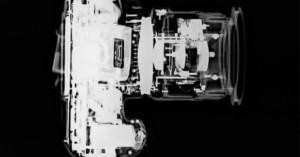
Memphis, Tennessee-based photographer and X-ray technician Blake Billings has a set of images showing what various cameras look like when photographed with an X-ray machine. What you see above is a Nikon D60 DSLR.